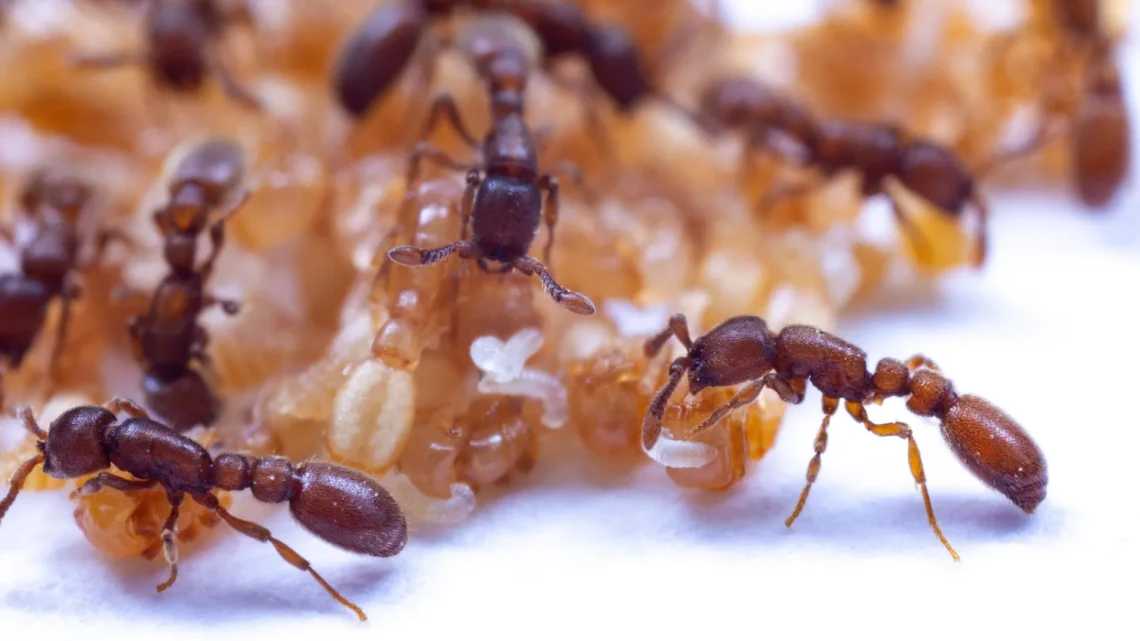Ant societies revolve around scent. Pheromones help these insects find food, alert them about predators, and manage the dynamics within their colonies. This chemical communication relies on a straightforward rule: one receptor per neuron. The ant genome houses hundreds of odorant receptor genes, each coding for a receptor designed to detect specific chemicals. If a neuron were to express multiple receptors simultaneously, the signals sent to the brain would be chaotic, and the ant would lose its precise sense of smell.
Recently, scientists studying the clonal raider ant unearthed a fascinating method by which each neuron selects a single odorant receptor from an extensive collection of genes. Their findings, published in Current Biology, unravel a long-standing enigma about how ants maintain clear sensory signals.
“We’re unveiling a new form of gene regulation,” says Daniel Kronauer, head of the Laboratory of Social Evolution and Behavior at Rockefeller. “Our results highlight the significance of examining less conventional model species. Through clonal raider ants, we’ve discovered new fundamental molecular phenomena that we wouldn’t have observed in fruit flies.”
One receptor, one neuron
A core principle of olfaction is that each neuron must possess its unique molecular identity. “This is a well-established concept in sensory neuroscience,” notes Giacomo Glotzer, a graduate student in Kronauer’s lab. “Typically, each sensory neuron expresses just one receptor, defining its identity.”
Every species tackles the “one receptor, one neuron” challenge differently. Fruit flies utilize molecular switches to activate individual genes, ensuring only one receptor becomes prominent in each sensory neuron. In mammals, a more chaotic system sees neurons randomly reshuffling their chromatin until just one receptor gene is accessible.
It remained uncertain whether ants followed a method similar to fruit flies or mice, or if they had their own unique approach. Unlike fruit flies, which manage with about 60 odorant receptors, ants boast several hundred—comparable to mammals. Moreover, many of their receptors are situated in clusters of nearly identical genes. In such a crowded area, activating one gene could inadvertently trigger others, making a straightforward approach like the fruit fly’s impractical for the complex olfactory system of ants. This suggested that ants must have a different way to maintain the 1:1 olfactory ratio.
Building on a foundational paper released in 2023, the lab endeavored to capture this elusive mechanism in action. They dissected the antennal tissue of clonal raider ants, utilizing RNA sequencing to identify active genes and RNA fluorescence in situ hybridization to pinpoint these genes in the ant antenna. They applied various advanced molecular and computational techniques to visualize one selected receptor while silencing its neighboring genes.
The researchers discovered that when an ant neuron activates its chosen receptor gene, it doesn’t just stop there. The RNA polymerase—the enzyme that copies DNA into RNA—extends beyond the gene’s normal endpoint, encroaching on the downstream genes. These “readthrough” transcripts remain trapped in the nucleus, likely due to lacking the specific tag needed for export. The authors speculate that while these transcripts may be non-functional, their production helps silence adjacent genes. Simultaneously, the neuron creates “antisense” RNAs in the opposite direction, blocking any upstream genes that could inadvertently activate.
This process forms a protective genetic barrier around the chosen receptor gene.
“By dissecting this mechanism into its basic components, we found that it helps silence the immediate genomic environment, giving the cell its unique receptor identity,” explains Parviz Daniel Hejazi Pastor, a biomedical fellow in Kronauer’s lab. “Our findings are centered around transcriptional interference—where the neuron selects one receptor by preventing the true transcription of other receptors both upstream and downstream.”
Beyond clonal raider ants
The team confirmed that this mechanism is also found in other social insects, such as the Indian jumping ant and the honeybee. This discovery suggests that many insects—both social and non-social—may use transcriptional interference to uphold a 1:1 ratio between receptors and neurons. “This mechanism might be more widespread than we previously thought, especially among insect species with extensive olfactory receptor gene collections,” says Kronauer. “It’s even conceivable that fruit flies are the exceptions.”
The implications stretch far beyond insect smell. By demonstrating that tightly packed clusters of related genes can be controlled through two-way safeguards—readthrough that dampens downstream neighbors and antisense transcription that blocks upstream ones—this research provides insight into how genomes manage large gene families. The findings might also explain how ants rapidly adapt their sense of smell over relatively short evolutionary periods. This mechanism could enable the integration of newly duplicated receptor genes into a sensory system without needing to evolve additional regulatory processes.
“Once you have such a system in place, you can allow it to become more intricate without disrupting functionality,” Kronauer remarks. “We suspect that this kind of gene regulatory framework assists ants in quickly evolving new olfactory receptors.”
Summary: Researchers studying clonal raider ants have unveiled a unique method by which each neuron selects a single odorant receptor from numerous genes, ensuring clear sensory signals. This mechanism, involving transcriptional interference, silences neighboring receptors and may be shared among various insects. The findings enhance our understanding of gene regulation and how ants quickly adapt their olfactory capabilities.





